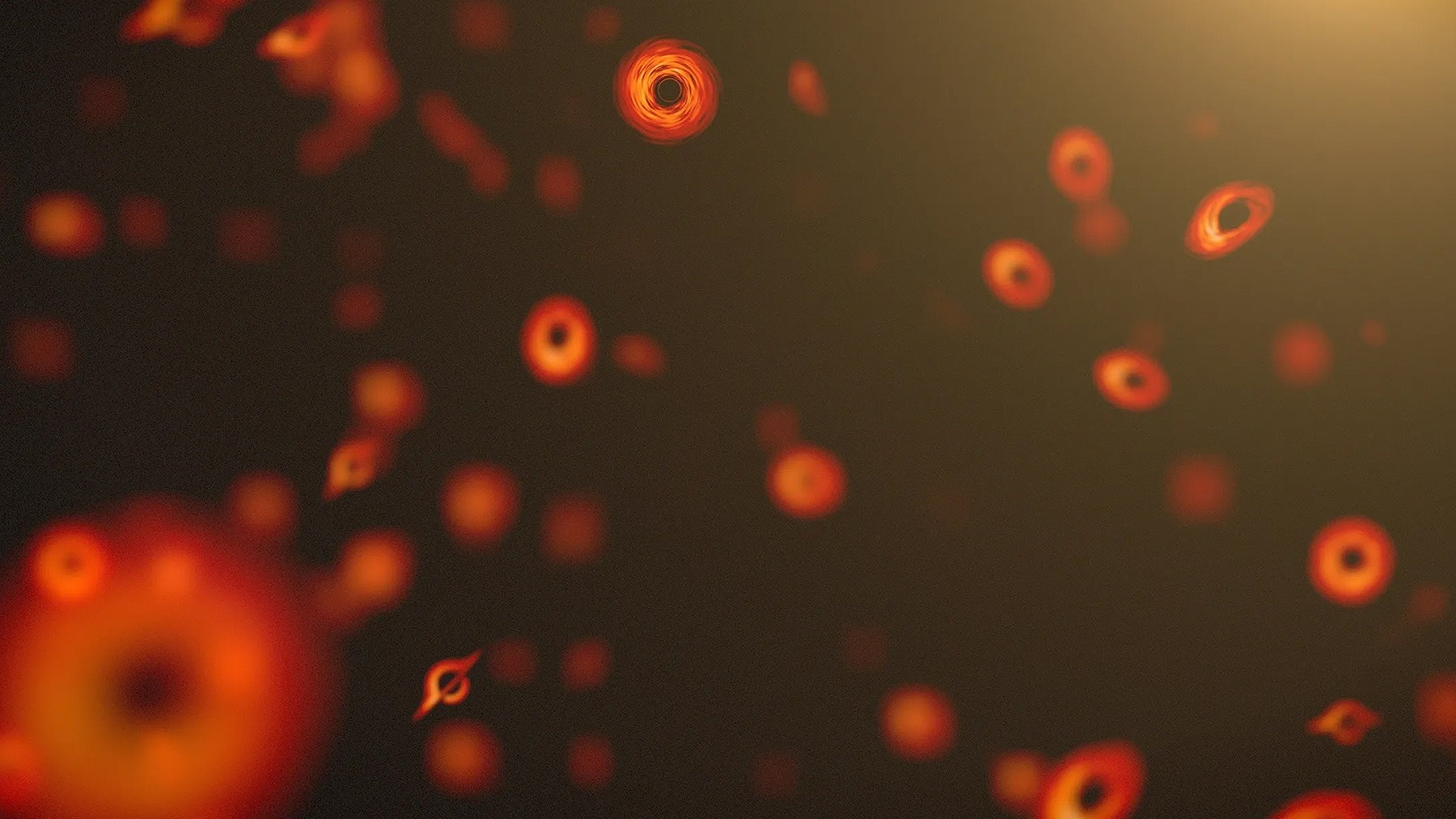Miniature black holes could be hollowing out planets and zipping through our bodies, new study claims
Some physicists say the lingering questions about our universe could be solved by hypothetical objects called primordial black holes. New research claims the evidence of their existence could be right here on Earth.

Minuscule black holes that can hollow out entire planets could be tunneling through objects on Earth, according to a wild new theoretical study. These hypothetical space-time missiles may be leaving microscopic traces of their passage in everyday objects and even our own bodies, the new research suggests.
Formed in the fiery afterglow of the Big Bang, primordial black holes (PBHs) are one of the candidates for dark matter — the mysterious, invisible substance that makes up 85% of the universe's matter.
Yet the extreme tininess of these hypothetical black holes means that, so far, no evidence for them has been found. Now, a team of physicists, writing in the December issue of the journal Physics of the Dark Universe, has proposed a new place to look for clues — everywhere.
"The chances of finding these signatures are small, but searching for them would not require much resources and the potential payoff, the first evidence of a primordial black hole, would be immense," co-author, Dejan Stojkovic, a professor of physics at the University at Buffalo, said in a statement. "We have to think outside of the box because what has been done to find primordial black holes previously hasn't worked."
Black holes as we know them are born from the gravitational collapse of dying stars or gas clouds. Throughout their lifespan, they can gorge on matter and merge with other black holes to swell to monstrous, supermassive scales.
Related: Scientists may have finally solved the problem of the universe's 'missing' black holes
But primordial black holes are different beasts altogether. Formed from dense pockets of subatomic matter in the first few fractions of a second of the universe's life, the hypothetical entities are as heavy as mountains yet barely larger than a hydrogen atom. This makes proving (or disproving) their existence an incredibly difficult task.
Sign up for the Live Science daily newsletter now
Get the world’s most fascinating discoveries delivered straight to your inbox.
To help in the hunt for these extreme entities, the physicists behind the new study performed a number of calculations to constrain what astronomers should be looking for when they search for the objects. One idea they propose is to look for planets and asteroids that captured the mini black holes and became hollowed-out by them.
"If the object has a liquid central core, then a captured PBH can absorb the liquid core, whose density is higher than the density of the outer solid layer," Stojkovic says. After sucking up the insides of a planetoid, the tiny black holes could then escape from the planetary shell after an impact from another space rock jolts it free.
Then, if the hollowed-out rock is relatively small — roughly one-tenth the size of Earth — it could survive as a shell for astronomers to spot.
"If it is any bigger than that, it's going to collapse," Stojkovic said.
But we may not even need to look into the skies to find evidence of the mini monsters. The researchers also calculated what would happen if a primordial black hole travelling at high speed were to zip through an object here on Earth. They found that a PBH with a mass of 1.12 tons (1,019 kilograms) would bore a tunnel 700 times smaller than the width of a human hair if an unlucky object got in its way.
Thankfully, that's unlikely to cause any noticeable damage to human tissue, the researchers noted.
"If a projectile is moving through a medium faster than the speed of sound, the medium's molecular structure doesn't have time to respond," Stojkovic says. "Throw a rock through a window, it's likely going to shatter. Shoot a window with a gun, it's likely to just leave a hole."
The odds of this happening to anyone or anything are also incredibly slim — with the researchers' calculations showing the probability of a primordial black hole passing through a billion-year-old boulder to be 0.0001%. This means that, if we are to search for evidence of PBHs, we should look in materials and buildings that are already very old, the scientists noted.
Such efforts to find objects that haven't even been proven to exist could easily be dismissed, but the researchers say that unconventional thinking could be essential in tackling unresolved problems that have plagued physics for decades — the nature of dark matter being just one of them.
"The smartest people on the planet have been working on these problems for 80 years and have not solved them yet," Stojkovic said. "We don't need a straightforward extension of the existing models. We probably need a completely new framework altogether."

Ben Turner is a U.K. based staff writer at Live Science. He covers physics and astronomy, among other topics like tech and climate change. He graduated from University College London with a degree in particle physics before training as a journalist. When he's not writing, Ben enjoys reading literature, playing the guitar and embarrassing himself with chess.










